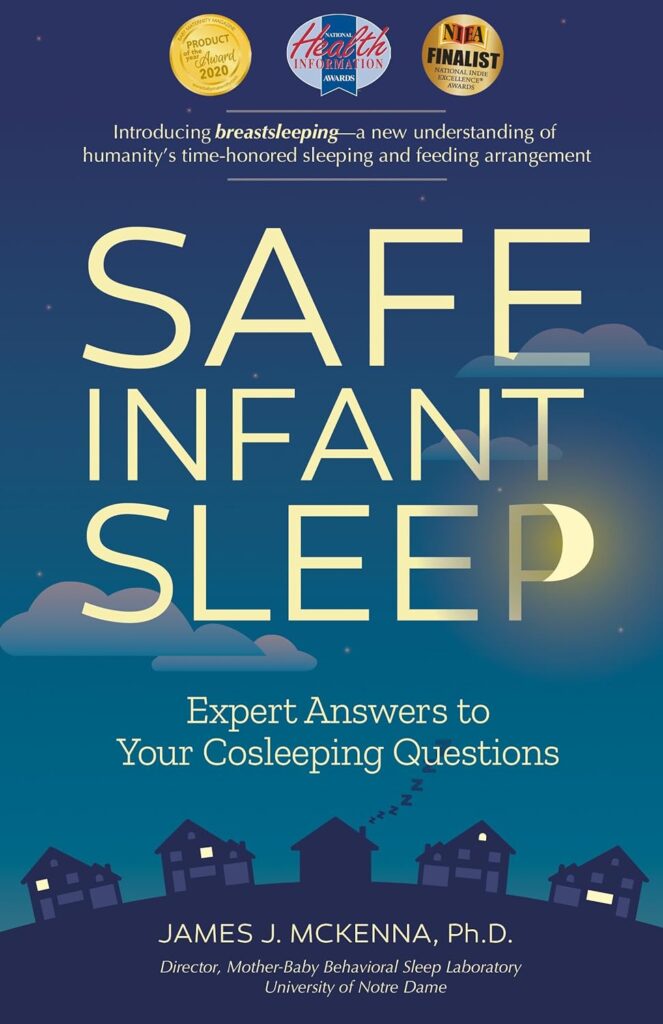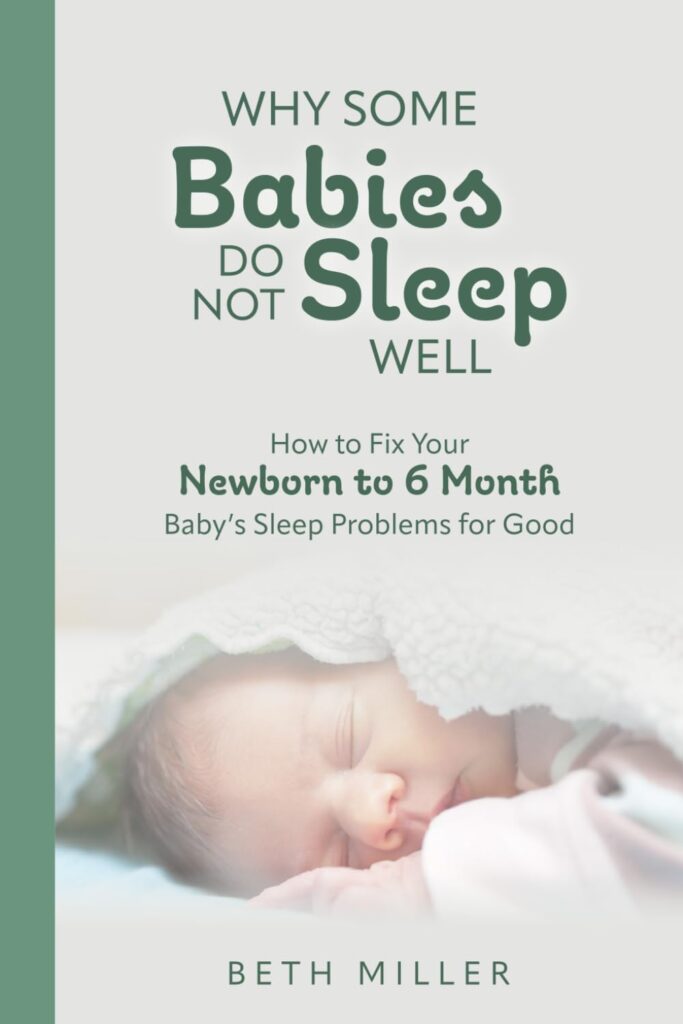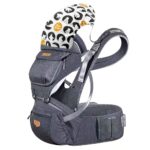To reduce SIDS risk, always place babies on their backs to sleep and use a firm, flat sleep surface. Keeping the sleep area free of soft objects and loose bedding is crucial.
Ensuring safe sleep practices is a vital step in reducing the risk of Sudden Infant Death Syndrome (SIDS), a cause of concern for new parents and caregivers. It’s not just about the sleep position; creating an optimal sleep environment is equally important.
With a clear focus on safety, these guidelines serve as a beacon for parents navigating the first months of their infant’s life. As you prepare the nursery, remember that less is more: a bare crib with a tight-fitting sheet is the gold standard. Embrace these safety measures and make informed choices for your baby’s sleep routine, as they could significantly decrease the likelihood of SIDS and provide peace of mind during those precious nighttime hours.

The Basics Of Sids And Sleep Safety
Sudden Infant Death Syndrome (SIDS) is the unexplained death of a baby younger than one year old. These tragedies often occur during sleep. Understanding SIDS and practicing safe sleep can significantly reduce risks.
Defining Sudden Infant Death Syndrome
SIDS is a term that strikes fear into the hearts of parents. It refers to the sudden death of an infant that cannot be explained after a thorough investigation. This includes an autopsy, examination of the death scene, and review of the clinical history.
Significance Of Sleep In Sids Prevention
- Back to sleep: Always place babies on their backs to sleep.
- Firm sleep surface: Use a firm mattress with a fitted sheet.
- Room sharing, not bed sharing: Keep baby’s sleep area in the same room where you sleep.
- Keep soft items away: No pillows, blankets, or toys in the sleep area.
- Avoid overheating: Dress the baby appropriately for the room temperature.
- Pacifiers may help: Consider offering a pacifier at naptime and bedtime.
| Sleep Safety Practice | Description | Benefit |
|---|---|---|
| Back Sleeping | Babies should sleep on their backs. | Reduces SIDS risk. |
| Empty Crib | No toys, pillows, or loose bedding. | Prevents suffocation. |
| Room Temperature | Keep the room comfortable. | Prevents overheating. |

Credit: www.cottagehealth.org
Back To Basics: Sleep Positioning
Ensuring a safe sleep environment for babies is crucial to reduce the risk of Sudden Infant Death Syndrome (SIDS). One of the most important practices is proper sleep positioning. The ‘Back to Sleep’ campaign has significantly lowered SIDS rates by educating parents and caregivers on the importance of placing babies on their backs to sleep. Let’s delve into the benefits of back sleeping and dispel some common myths about side and stomach sleeping.
Pros Of Back Sleeping
- Reduces SIDS Risk: Back sleeping is the safest position, lowering the chances of SIDS.
- Improves Breathing: It keeps airways open for easier breathing.
- Prevents Choking: Babies are less likely to choke when on their backs.
Myths About Side And Stomach Sleeping
| Myth | Fact |
|---|---|
| Babies sleep deeper on their stomach. | Deeper sleep is not safer. Back sleeping is healthiest for babies. |
| Babies will choke on their back. | Their anatomy and gag reflex protect them from choking. |
| Side sleeping is a good compromise. | Babies can roll onto their stomachs, increasing SIDS risk. |
Creating A Safe Sleep Environment
Sudden Infant Death Syndrome (SIDS) is a worry for all new parents. A safe sleep environment can reduce the risk of SIDS. Parents need to know the right way to set up a baby’s sleeping area.
Choosing The Right Sleep Surface
A firm mattress in a safety-approved crib is essential. Never place a baby on a soft surface like a couch or a pillow-top mattress.
- Use a firm and flat mattress.
- Ensure the crib meets safety standards.
- Avoid mattresses with memory foam for babies.

The Danger Of Soft Bedding And Toys
Soft items can cause suffocation. Keep the crib empty:
- No pillows or soft bedding.
- No stuffed animals or toys.
- Do not use crib bumpers.
Bare is best when it comes to a baby’s crib. A fitted sheet on the mattress is all you need.
Temperature And Clothing For Safe Sleep
Ensuring your baby has a safe sleep environment is crucial. Temperature and clothing play key roles in reducing risks associated with Sudden Infant Death Syndrome (SIDS). Let’s explore the best practices for setting the right room temperature and choosing appropriate sleepwear for infants.
Ideal Room Temperature
Maintaining the right room temperature is essential for your baby’s safe sleep. Experts recommend keeping the room at a temperature comfortable for a lightly clothed adult.
- A temperature between 68°F and 72°F (20°C to 22°C) is considered ideal.
- This range helps ensure your baby does not overheat.
Using a room thermometer can help you monitor and maintain this temperature range effectively.
Appropriate Sleepwear For Infants
Selecting the right sleepwear is important to keep your baby safe and comfortable:
- Choose one-piece sleepers or wearable blankets.
- Avoid anything with strings or ties to prevent hazards.
- Ensure clothing is snug-fitting and made of breathable materials like cotton.
Layering can be adjusted based on the room temperature, avoiding the use of loose blankets.
Co-sleeping Considerations
Safe sleep can protect babies from Sudden Infant Death Syndrome (SIDS). One key area of focus is co-sleeping. Parents often consider co-sleeping for bonding and convenience. Yet, it’s crucial to understand the risks and safer alternatives.
Risks Of Bed-sharing
Bed-sharing poses risks for infants. Babies might suffocate if a parent accidentally rolls over or if pillows and blankets cover the baby’s face. Adult beds are not designed for infants, as they can get trapped or fall. These dangers make bed-sharing a risk for SIDS.
Safer Alternatives To Bed-sharing
For close bonding without the risks, consider these:
- Room-sharing: Keep the baby’s crib or bassinet in your room.
- Separate surfaces: Baby sleeps on a separate, firm surface.
- No loose bedding: Keep soft objects away from the baby.
These practices ensure that you’re near your baby while reducing SIDS risks.
The Role Of Breastfeeding
The importance of safe sleep practices can never be over-emphasized when it comes to the health and safety of infants. Breastfeeding plays a crucial role in this context. It’s not just about nutrition; breastfeeding is linked to a lower risk of Sudden Infant Death Syndrome (SIDS). Let’s dive into how breastfeeding can be a vital part of your baby’s safe sleep routine.
Breastfeeding Benefits For Sids Reduction
Research shows that breastfeeding has a protective effect against SIDS. Infants who are breastfed are less likely to succumb to this condition.
- Exclusive breastfeeding for at least 6 months is best.
- Partial breastfeeding also helps but not as much as exclusive.
- Breast milk contains antibodies and immune factors that protect.
Managing Safe Sleep During Breastfeeding
While breastfeeding is beneficial, it’s important to follow safe sleep practices post-feeding. Here are some tips:
- Always place your baby on their back to sleep, even after nursing.
- Keep soft objects and loose bedding away from the sleep area.
- If you feel tired, avoid breastfeeding on a couch or armchair where you could fall asleep.
- Consider room-sharing without bed-sharing, which means the infant has their own safe sleep space in the same room.
Remember, breastfeeding and safe sleep practices are both critical in keeping your baby healthy and reducing the risk of SIDS.
Utilizing Pacifiers For Protection
Utilizing Pacifiers for Protection has become a recommended strategy to help reduce the risk of Sudden Infant Death Syndrome (SIDS). Offering a pacifier during naptime and bedtime can provide an extra layer of safety for sleeping infants.
Pacifiers And Sids Risk Reduction
Recent studies suggest that pacifiers may significantly lower the risk of SIDS. The exact reason isn’t clear, but it’s thought that pacifiers might help keep the airway open, making breathing easier while babies sleep.
- Pacifiers are simple to use.
- They are effective in calming babies.
- They may help prevent babies from rolling onto their stomachs.
Guidelines For Pacifier Use At Sleep Time
For safe pacifier use, follow these guidelines:
- Introduce the pacifier at nap time and bedtime once breastfeeding is well established, typically around 3 to 4 weeks of age.
- Use a clean, dry pacifier without attaching any strings or clips.
- If the pacifier falls out during sleep, do not put it back in the baby’s mouth.
Replace pacifiers often and check for signs of wear.
| Pacifier Safety Checklist | |
| Check For | Action |
|---|---|
| Tears or cracks | Replace immediately |
| Loose parts | Discard safely |
| Size appropriate for age | Ensure correct fit |

Credit: www.facebook.com
Vaccinations And Sids Prevention
Protecting infants from sudden infant death syndrome, commonly known as SIDS, is a top priority for parents and healthcare providers. Vaccinations play a crucial role in keeping babies healthy and safe. The link between immunizations and reduced SIDS risk is backed by scientific research. In this section, we will explore how vaccinations contribute to SIDS prevention.
Immunization Benefits Beyond Disease Prevention
Immunizations do more than protect against specific diseases. They boost the overall immune system of babies. Studies show that vaccinated children have a lower risk of SIDS. The reasons include:
- Enhanced immune function
- Protection against infections that can contribute to SIDS
- Improved overall health and well-being
Addressing Vaccination Myths And Sids
Despite evidence, some believe vaccinations could cause SIDS. This is a myth. Research proves the opposite. Vaccines are safe and effective. They reduce the risk of SIDS. Let’s debunk common myths:
| Myth | Fact |
|---|---|
| Vaccines overload the baby’s immune system | Babies’ immune systems are stronger than we think. Vaccines don’t overload them. |
| Vaccines cause SIDS | There is no link between vaccines and an increased risk of SIDS. Vaccines are safe. |
| Vaccines are not necessary | Vaccines prevent diseases that can lead to SIDS. They are essential for baby health. |
Monitoring And Devices: Helpful Or Not?
Parents often turn to technology for peace of mind in keeping their infants safe during sleep. With the threat of Sudden Infant Death Syndrome (SIDS) looming, it’s important to ask: do monitoring devices actually help in reducing the risk, or are they just gadgets with limited use?
The Efficacy Of Baby Monitors
Baby monitors have become a staple in many households. These devices keep an ear or eye on sleeping babies, alerting parents to cries or movements. But do they prevent SIDS? The answer is not straightforward.
- Audio and video monitors allow for quick response to a baby’s needs.
- Some high-tech monitors track breathing or heart rate.
- However, no monitor has been proven to prevent SIDS.
It’s essential that parents understand monitors are tools, not solutions. They should not replace safe sleep practices.
Sids Prevention Gadgets: Fact Vs. Fiction
The market is flooded with gadgets claiming to reduce SIDS risk. These range from smart socks to sleep positioners. Let’s separate fact from fiction.
| Gadget | Claims | Reality |
|---|---|---|
| Smart Socks | Monitor vitals | Not proven to prevent SIDS |
| Sleep Positioners | Keep baby in place | Potential risk, not recommended |
| Wearable Monitors | Track sleep patterns | Useful for data, not prevention |
While some gadgets provide data and alerts, they should not create a false sense of security. The American Academy of Pediatrics does not endorse any products for SIDS prevention.
Educating Caregivers And Babysitters
Sudden Infant Death Syndrome (SIDS) is a worry for parents and caregivers alike. Knowledge is power when it comes to infant safety. Training caregivers and babysitters on safe sleep practices is a critical step in reducing the risk of SIDS. A clear policy and consistent approach are essential for everyone involved in a child’s care.
Training On Safe Sleep Practices
Effective training equips caregivers with the knowledge to create a safe sleep environment. Here are key points to cover:
- Always place babies on their backs to sleep, for naps and at night.
- Use a firm sleep surface like a mattress in a safety-approved crib.
- Keep soft objects and loose bedding out of the sleep area.
- Avoid baby’s exposure to smoke, alcohol, and illicit drugs.
Creating A Universal Safe Sleep Policy
Having a universal safe sleep policy helps ensure consistency. This policy should include:
- Written guidelines on safe sleep practices for all caregivers.
- A commitment to maintain a safe sleep environment.
- Regular reviews and updates of safe sleep policies.
A shared understanding among all caregivers can help safeguard against SIDS.
The Impact Of Prenatal Care
Prenatal care plays a pivotal role in the health of both mother and child. It sets the foundation for a safe environment for infants, both in the womb and after birth. Ensuring adequate prenatal care is one of the key measures in reducing the risk of Sudden Infant Death Syndrome (SIDS). Let’s explore how certain pre-birth factors and maternal health contribute to minimizing this risk.
Pre-birth Factors Affecting Sids
A baby’s journey to a safe sleep starts long before they are born. Several factors during pregnancy can influence an infant’s SIDS risk.
- No smoking: Avoiding tobacco is critical.
- Alcohol use: Stay away from alcohol.
- Drug use: Illicit drugs are harmful.
- Healthcare visits: Regular check-ups are essential.
- Ultrasound appointments: They help monitor baby’s growth.
Importance Of Maternal Health
A mother’s health has a direct impact on her baby’s well-being. A healthy mom is more likely to have a healthy baby.
| Maternal Factor | Impact on SIDS Risk |
|---|---|
| Diet: | Eating nutritious foods supports fetal development. |
| Exercise: | Moderate exercise promotes good circulation. |
| Stress management: | Less stress can lead to healthier pregnancies. |
| Sleep: | Adequate rest is crucial for fetal health. |
In summary, both pre-birth factors and maternal health are instrumental in reducing the risk of SIDS. Expectant mothers should adhere to best practices for prenatal care to ensure the safest possible start for their infants.

Credit: myedmondsnews.com
Sleep Routines And Sids Risk
Introduction to Sleep Routines and SIDS Risk
Safe sleep practices are vital for the well-being of infants. Sudden Infant Death Syndrome (SIDS) remains a leading cause of death in infants under one year old. A consistent sleep routine is not just about good habits. It’s about safety. Understanding and establishing safe sleep routines can significantly reduce the risk of SIDS.
Establishing Consistent Sleep Patterns
Establishing Consistent Sleep Patterns
To protect infants, parents should establish consistent bedtime and naptime schedules. This regularity helps babies understand when it’s time to sleep and ensures they get adequate rest.
- Set regular times for bed and naps.
- Keep pre-sleep activities calm and soothing.
- Create a quiet environment to encourage sleep.
The Link Between Sleep Routine and Safety
The Link Between Sleep Routine And Safety
A structured sleep routine is linked to safer sleep. When babies sleep at the same times each day, they are more likely to sleep on their backs. This is the safest position to reduce SIDS risk.
| Sleep Routine Element | Impact on Safety |
|---|---|
| Consistent sleep times | Reduces the temptation to place babies in risky sleep positions |
| Calm pre-sleep routine | Lowers the risk of sleep disturbances that can lead to unsafe situations |
| Quiet sleep environment | Supports uninterrupted sleep, important for development and safety |
By aligning sleep routines with safe sleep practices, we create a protective bubble around our infants. This helps ensure that they grow up not just well-rested, but also well-protected.
Community Outreach And Sids Awareness
Sudden Infant Death Syndrome (SIDS) remains a leading cause of death among infants. Understanding safe sleep practices is vital for parents, caregivers, and communities. Community outreach and awareness play a crucial role in reducing the risk of SIDS.
Public Health Campaigns
Effective public health campaigns focus on educating communities about SIDS. They spread the word on safe sleep practices. Campaigns use materials like brochures, posters, and social media posts. They often partner with local hospitals, clinics, and pediatricians to reach a wide audience.
- Back-to-sleep position for all babies
- Use of firm, flat sleep surfaces
- Keeping soft objects away from the baby’s sleep area
Support Groups And Resources
Support groups provide comfort and education to families affected by SIDS. They offer a space to share experiences and receive emotional support. Resources such as hotlines and websites give information on safe sleeping. They also provide contacts for local support services.
| Resource | Description | Contact |
|---|---|---|
| SIDS Hotlines | Immediate assistance and guidance | 1-800-xxx-xxxx |
| Online Support Forums | Communities for sharing and advice | www.supportforum.com |
| Local Support Groups | Meetings for face-to-face support | Local Community Centers |
The Role Of Research In Sids Prevention
Research plays a key role in preventing Sudden Infant Death Syndrome (SIDS). It helps us understand which sleep practices are safest for babies.
Latest Findings On Sids
Recent research highlights key factors that can reduce SIDS risk:
- Babies should sleep on their backs, not on their stomachs or sides.
- A firm, flat sleep surface like a safety-approved crib mattress is essential.
- Keep soft objects and loose bedding out of the baby’s sleep area to avoid risks.
This information is crucial for all caregivers and parents.
Ongoing Studies And Their Significance
Scientists are continuously working to uncover more about SIDS. These studies are vital:
- They look at genetic and environmental factors that might influence SIDS.
- Research explores how brain abnormalities can affect a baby’s breathing and sleep arousal.
Each study brings us closer to understanding and preventing SIDS.
Legal Framework And Safe Sleep Legislation
Protecting infants during sleep is not just a health concern; it’s also a matter of legal consideration. Countries and states have enacted laws and regulations to enforce safe sleep practices. These aim to reduce the risk of Sudden Infant Death Syndrome (SIDS) and other sleep-related infant deaths. Let’s explore the impact of these legal measures.
Safe Sleep Laws And Regulations
Legal measures play a critical role in ensuring babies sleep safely. These laws often mandate the use of approved cribs and safe sleeping positions. For example, some laws require that babies sleep on their backs and that cribs meet specific safety standards.
- Crib standards ensure the design and construction of cribs do not pose a risk to infants.
- Education programs funded by law can teach parents about safe sleep.
- Regulations may ban the sale of dangerous sleep products.
The Effectiveness Of Legal Measures In Sids Prevention
The introduction of safe sleep legislation has been linked to a decrease in SIDS rates. Evidence shows that when parents and caregivers follow these laws, infants are less likely to encounter sleep-related dangers.
| Year | SIDS Rate Before Legislation | SIDS Rate After Legislation |
|---|---|---|
| Pre-Legislation | High | N/A |
| Post-Legislation | Reduced | Significantly Lower |
Laws that focus on safe sleep education and the elimination of hazardous products have proven effective. These laws save lives by preventing tragic losses due to SIDS.
Frequently Asked Questions
What Are The Safe Sleeping Practices Recommended By Sids?
Always place babies on their backs to sleep. Use a firm, flat sleep surface with a fitted sheet. Keep soft objects and loose bedding out of the crib. Share a room, not a bed, with your baby. Consider offering a pacifier at naptime and bedtime.
What Are 3 Major Strategies For Reducing The Risk Of Sids?
To reduce the risk of SIDS, follow these three strategies: 1. Always place babies on their backs to sleep. 2. Maintain a clear crib, free of soft bedding and toys. 3. Ensure the sleeping environment is cool and well-ventilated.
How To Prevent Sids While Sleeping?
Ensure babies sleep on their backs, use a firm mattress, avoid soft bedding, keep the room cool, and offer a pacifier during sleep.
What Are Safe Sleep Practices And Sids Suffocation Risk Reduction?
Ensure babies sleep on their backs on a firm surface. Keep cribs clear of soft items and loose bedding. Share a room but not a bed. Avoid overheating. Opt for breastfeeding if possible.
What Is The Best Sleep Position For Sids Prevention?
Babies should always be placed on their backs for sleep, both for naps and at night, to minimize the risk of SIDS.
Conclusion
Ensuring your baby sleeps safely is crucial for their well-being and reducing the risk of SIDS. Always place your baby on their back to sleep, use a firm mattress, and keep the sleep area clear of soft items. Keeping your baby in your room but on a separate sleep surface also aids in monitoring.
By adhering to these guidelines, you’re taking significant steps toward safeguarding your baby’s sleep and health. Remember, each safe practice contributes to a safer sleep environment.







